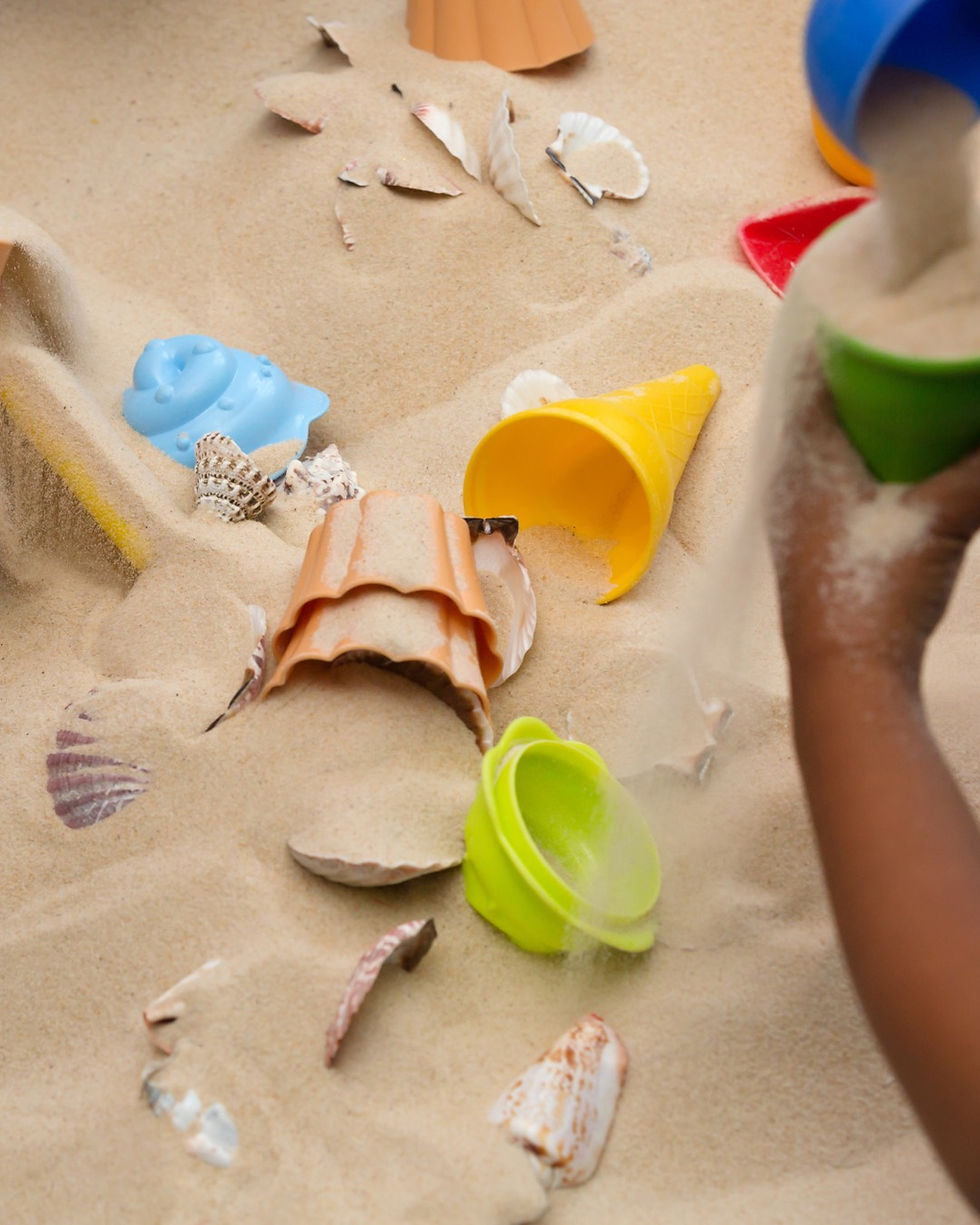NO SCHOOL, NO STRUCTURE? HOW TO KEEP YOUR CHILD WITH AUTISM ENGAGED DURING THE HOLIDAYS
- Nuture Child Development Clinic

- Aug 5
- 5 min read

The holidays can bring both joy and fear to parents, especially when raising toddlers or children on the autism spectrum. For children aged 18 months to 6 years with developmental concerns like autism or speech delay, school holidays often mean a disruption in routine, increased restlessness, regressions, sleep difficulties and heightened anxiety, which you can observe as behavioural outbursts and emotional dysregulation like tantrums and meltdowns. The familiar structure they rely on vanishes overnight, and you may find yourself asking:
How do I keep my child engaged without everything falling apart?However, holidays don’t have to be overwhelming. Structure doesn't mean rigid schedules or pressure. It simply means having a consistent rhythm of the day, predictable transitions, visual cues and meaningful engagement. With some simple planning, you can help your child stay engaged, regulated, and even learn new skills during the break.

7 STRATEGIES TO SUPPORT YOUR CHILD DURING THE HOLIDAYS
1. Create a Flexible but Predictable Routine
Children with autism thrive on knowing what comes next. A routine doesn’t need to be perfect or packed. Just ensure the day has a rhythm. For instance,
6:00 am - Wake up/Prayer
7:30 am - Brush teeth and dress up
8:00 am - Go to the shop
8:00 am - Breakfast
9:00 am - Free play (with blocks, water, puzzles, etc.)
10:00 am - Therapy session/learning
1:00 pm - Lunch
2:00 pm - Nap or quiet time
3:00 pm - Sensory play (painting, clay, bubbles) or evening walks
6:00 pm - Go home
6:30 pm - Dinner preparation
7:00 pm - Dinner
7:00 pm - Family time
8:00 pm – Prayer/Sleep

Use visual schedules with images or drawings for these key activities. You can create one with paper and markers or download a free printable template to map out your child's day.
Important tip: You can let your child help plan some parts of the schedule. This increases cooperation and reduces resistance.
2. Anchor Each Day with Familiar Sensory-Friendly Activities
This break is a great time to help your child engage all of their senses. So, even without school, there are daily rituals that help children feel safe like;
Greeting routines (e.g., "Good morning," "Hello," "How are you?")
Music and movement breaks
Mealtimes together
Prayer or family devotion time
Reading or bedtime stories

It's not always the case that you would want them to stay quiet; children learn more from playing and engaging in activities. Children can get bored and want stimulation. Hence, you can include sensory play, gross motor games, simple chores, or turn-taking games. Use what’s already available at home, like buckets, rice, water, plastic bowls, paper, and spoons. You don't need fancy toys to call it a play! You can participate in the activities below:
Water play with cups, sponges, or bowls
Sand, or “eba" dough-squishing
Tunnel crawling using pillows and chairs
These activities not only keep your children engaged but also help to regulate their nervous system and keep them calm and focused.
3. Use Everyday Moments for Learning
You don’t need fancy toys or programs to build developmental skills. All you need is presence, love and creativity. For instance,
Counting socks while folding laundry can help develop maths skills.
Naming fruits while cooking can help boost your child’s vocabulary.
Taking turns in pretend play is a great asset in social communication.
Encourage your child’s development through everyday routines, not just formal therapy.
4. Involve Siblings and Family Members
Holidays often bring more family around, including cousins, siblings, and aunties. While this can be a lot, it’s also a chance to build social interaction. Educate the nuclear and extended family on your child's needs, like stimming, sensory overload, and how best to interact without judgment – it’s an opportunity to teach so as to make your parenting journey easier. Also let siblings and close family learn how to play cooperatively with your child by:
Teaching them simple turn-taking games
Encouraging shared chores (e.g., setting the table together)
Modelling how to speak clearly and slowly when communicating with your child with autism.

Remember that involving siblings helps to build inclusion, reduce resentment, and improve sibling bonding. Also, perfection should not be the goal. Mistakes and imperfections will happen!
5. Prepare for Public Outings or Visitors
Remember the last time you had the opportunity to prepare your child for public outings, you claimed there was no time. Now! This is holiday period, and I can bet the chances of visitors coming around to visit you would greatly increase, so enough of procrastination. It's time to show up for your child.

First, practice social scripts before family visits (e.g., say hi and wave).
Give your child a quiet corner or headphones if it gets noisy.
Let visitors know ahead of time about your child’s preferences.
Empowered parenting also includes advocating for your child’s needs in family and public spaces.6. Watch for Overstimulation or Boredom
Signs your child may be overstimulated can include covering ears, tantrums, pacing or flapping and so on.
Rather than shout at them or give strict instructions to follow, you can offer calming activities like deep pressure hugs, quiet play with a favourite toy, dimmed lights or soft music.
If your child is bored, you can rotate toys weekly, introduce new textures, or change the play location (balcony, veranda, or mat outdoors).

7. Be Realistic and Compassionate with Yourself
Not every day will be perfect, and that’s okay. Some days your child may stim more, have more tantrums, or resist all plans. This doesn’t mean you’ve failed.
Once again, structure is about rhythm, not rigidity. The goal is to reduce anxiety and increase connection, not to create a “school” at home.
Take care of yourself, ask for help, and lean on support when needed.

Make the holidays work for you. The holidays can be a great time to pause, bond, and build skills through play and presence. What your child needs most is consistency, connection, and compassion, not fancy toys. Start small. Add one new structure each day, observe what works, and don’t forget to care for yourself too.
Do you need help designing a simple holiday routine for your child? Chat with one of our professionals here.
References
Boyd, B. A., McDonough, S. G., & Bodfish, J. W. (2010). Evidence-based behavioural interventions for repetitive behaviours in autism. Journal of Autism and Developmental Disorders, 42(6), 1236–1248.
National Autistic Society. (2020). Supporting children during the holidays. Retrieved from https://www.autism.org.uk
Rivers, J. W., & Stoneman, Z. (2003). Sibling relationships when a child has autism: Marital stress and support coping. Journal of Autism and Developmental Disorders, 33(4), 383–394.
.png)

Comments